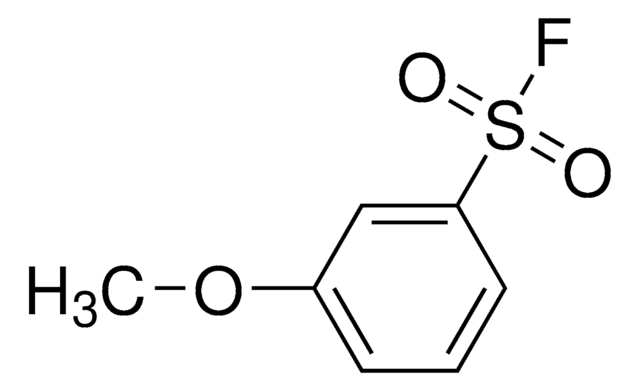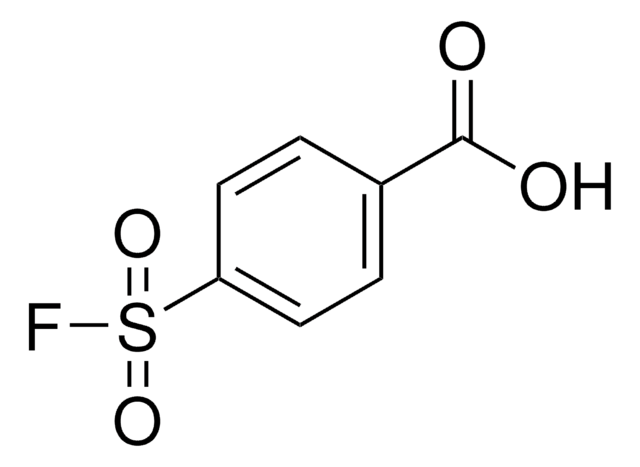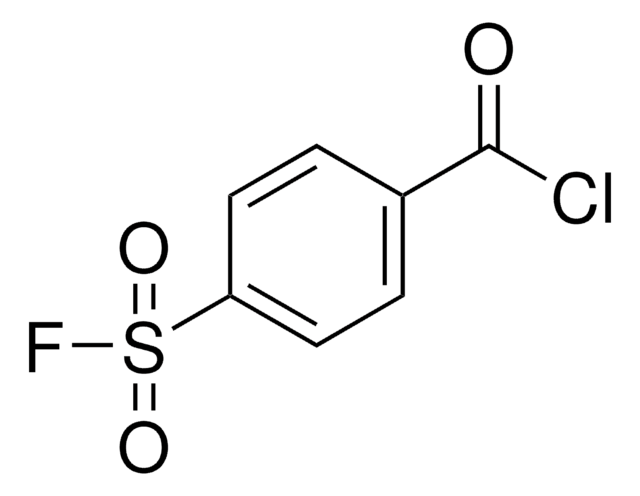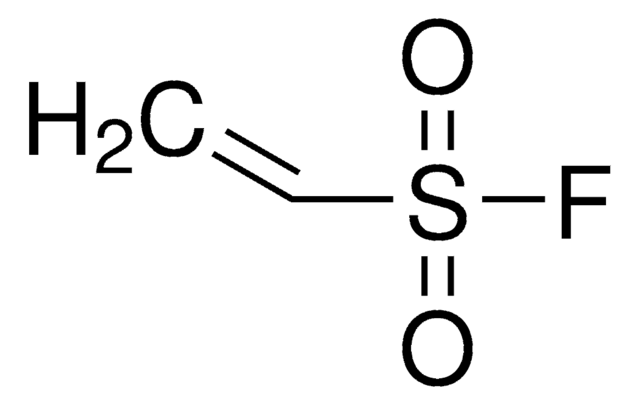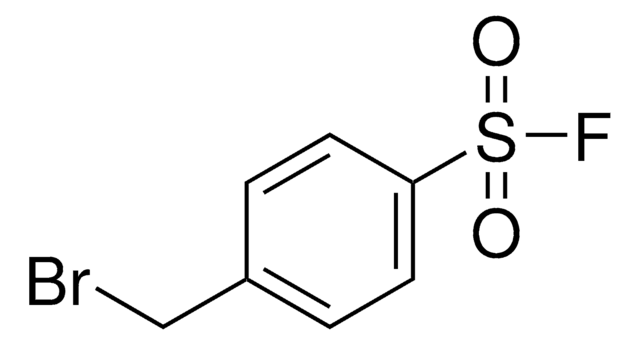900600
3-(Fluorosulfonyl)-5-((trimethylsilyl)ethynyl)benzoic acid
≥95%
Synonym(e):
Carboxyl sulfonyl fluoride alkyne, Probe building block
About This Item
Empfohlene Produkte
Assay
≥95%
Form
solid
Eignung der Reaktion
reagent type: cross-linking reagent
Verfügbarkeit
available only in USA
Lagertemp.
−20°C
SMILES String
O=S(C1=CC(C#C[Si](C)(C)C)=CC(C(O)=O)=C1)(F)=O
Anwendung
Ähnliches Produkt
Signalwort
Danger
H-Sätze
Gefahreneinstufungen
Eye Irrit. 2 - Self-react. C - Skin Irrit. 2
Lagerklassenschlüssel
5.2 - Organic peroxides and self-reacting hazardous materials
WGK
WGK 3
Flammpunkt (°F)
Not applicable
Flammpunkt (°C)
Not applicable
Hier finden Sie alle aktuellen Versionen:
Analysenzertifikate (COA)
Leider sind derzeit keine COAs für dieses Produkt online verfügbar.
Wenn Sie Hilfe benötigen, wenden Sie sich bitte an Kundensupport
Besitzen Sie dieses Produkt bereits?
In der Dokumentenbibliothek finden Sie die Dokumentation zu den Produkten, die Sie kürzlich erworben haben.
Unser Team von Wissenschaftlern verfügt über Erfahrung in allen Forschungsbereichen einschließlich Life Science, Materialwissenschaften, chemischer Synthese, Chromatographie, Analytik und vielen mehr..
Setzen Sie sich mit dem technischen Dienst in Verbindung.

